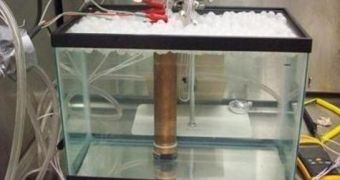At one point in time, whenever physicists spoke of cold fusion, they were given the silence treatment, or were looked at in disbelief. But those days seem to have disappeared, according to ideas being circulated at the 239th National Meeting of the American Chemical Society (ACS). The meeting is being held at the Moscone Center March 22-23, and researchers here are presenting new documents to validate the fact that cold fusion could become a very potent source of renewable energy, that could one day lead to fossil fuels being taken off the market, ScienceDaily reports.
The new symposium, entitled “New Energy Technology,” will feature no less than 50 presentations on the subject, from researchers around the world whose labs have dedicated time and money to research in cold fusion. “Years ago, many scientists were afraid to speak about 'cold fusion' to a mainstream audience,” explains Jan Marwan, PhD. He is the organizer of the conference, as well as an internationally-renowned expert in the field. The scientist also heads the Berlin, Germany-based company Dr. Marwan Chemie.
“Now most of the scientists are no longer afraid and most of the cold fusion researchers are attracted to the ACS meeting. I've also noticed that the field is gaining new researchers from universities that had previously not pursued cold fusion research. More and more people are becoming interested in it. There's still some resistance to this field. But we just have to keep on as we have done so far, exploring cold fusion step by step, and that will make it a successful alternative energy source. With time and patience, I'm really optimistic we can do this!” Marwan adds.
Cold fusion essentially refers to achieving nuclear fusion, the kind of chemical reaction powering up the Sun, at room temperature, under normal conditions. This seems far-fetched to many for good reason, given that excessive temperatures and pressures are required to achieve hot fusion. But a growing group of physicists believes that this could be achieved without multi-billion dollar reactors and temperatures of millions of degrees Fahrenheit. “The field is now experiencing a rebirth in research efforts and interest, with evidence suggesting that cold fusion may be a reality,” Marwan concludes.

 14 DAY TRIAL //
14 DAY TRIAL //